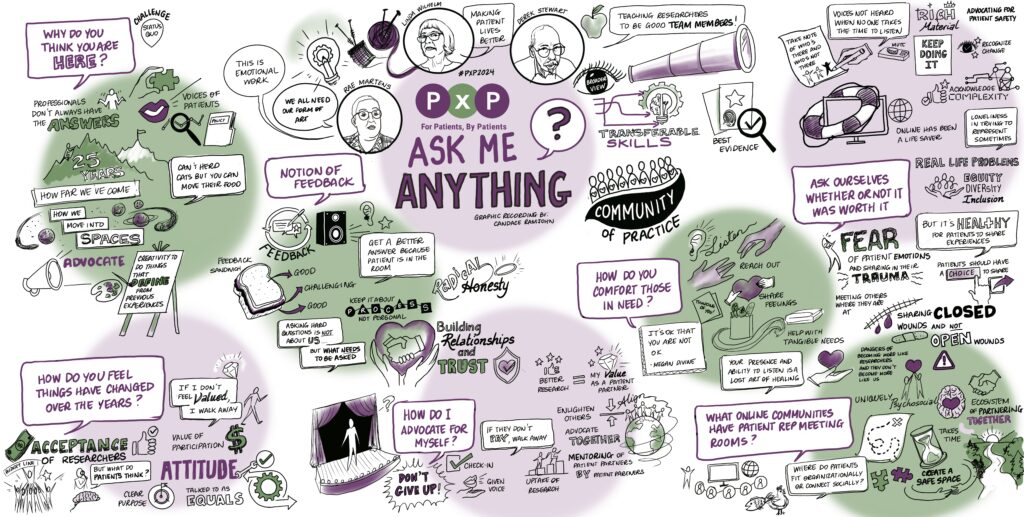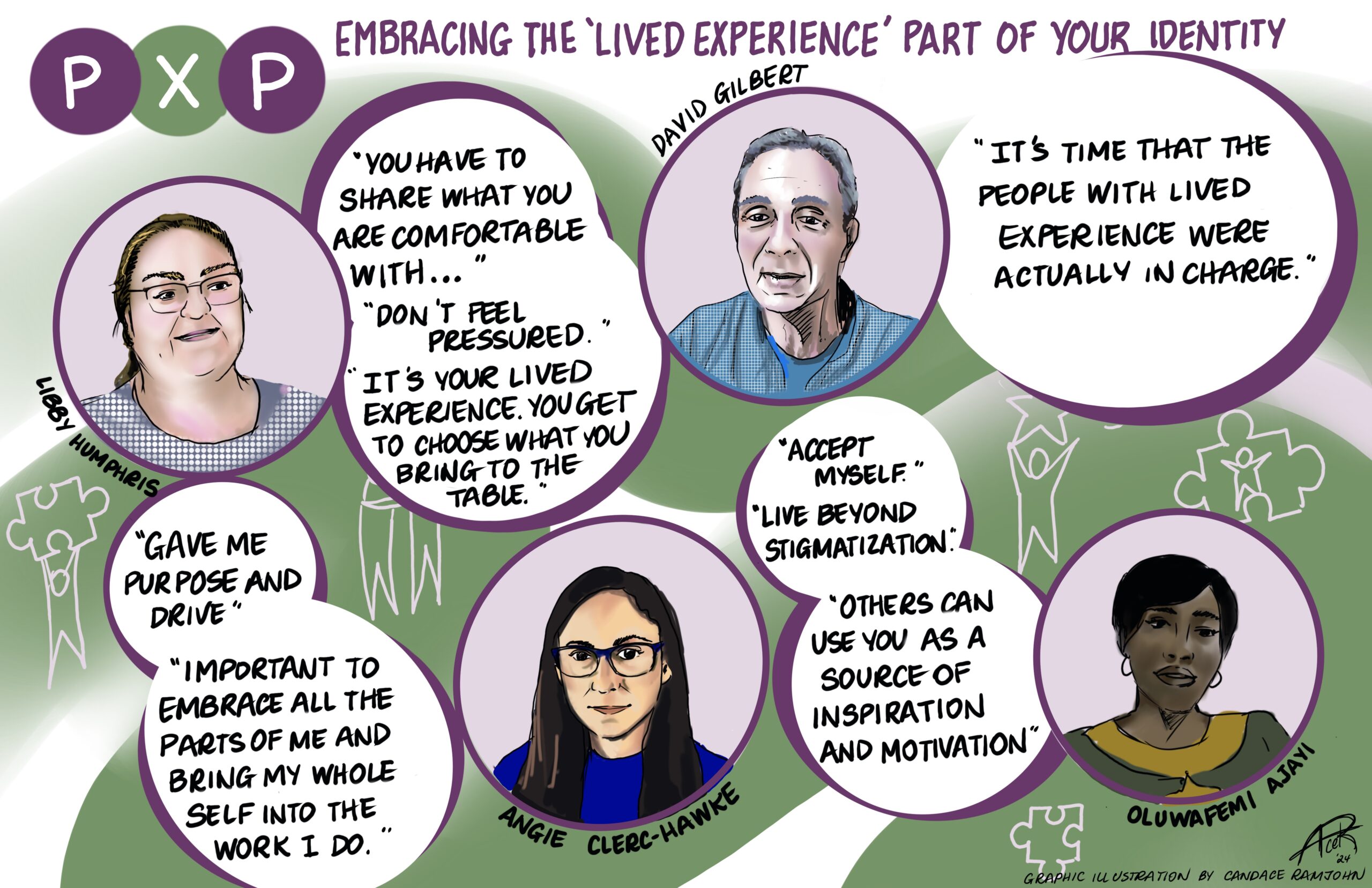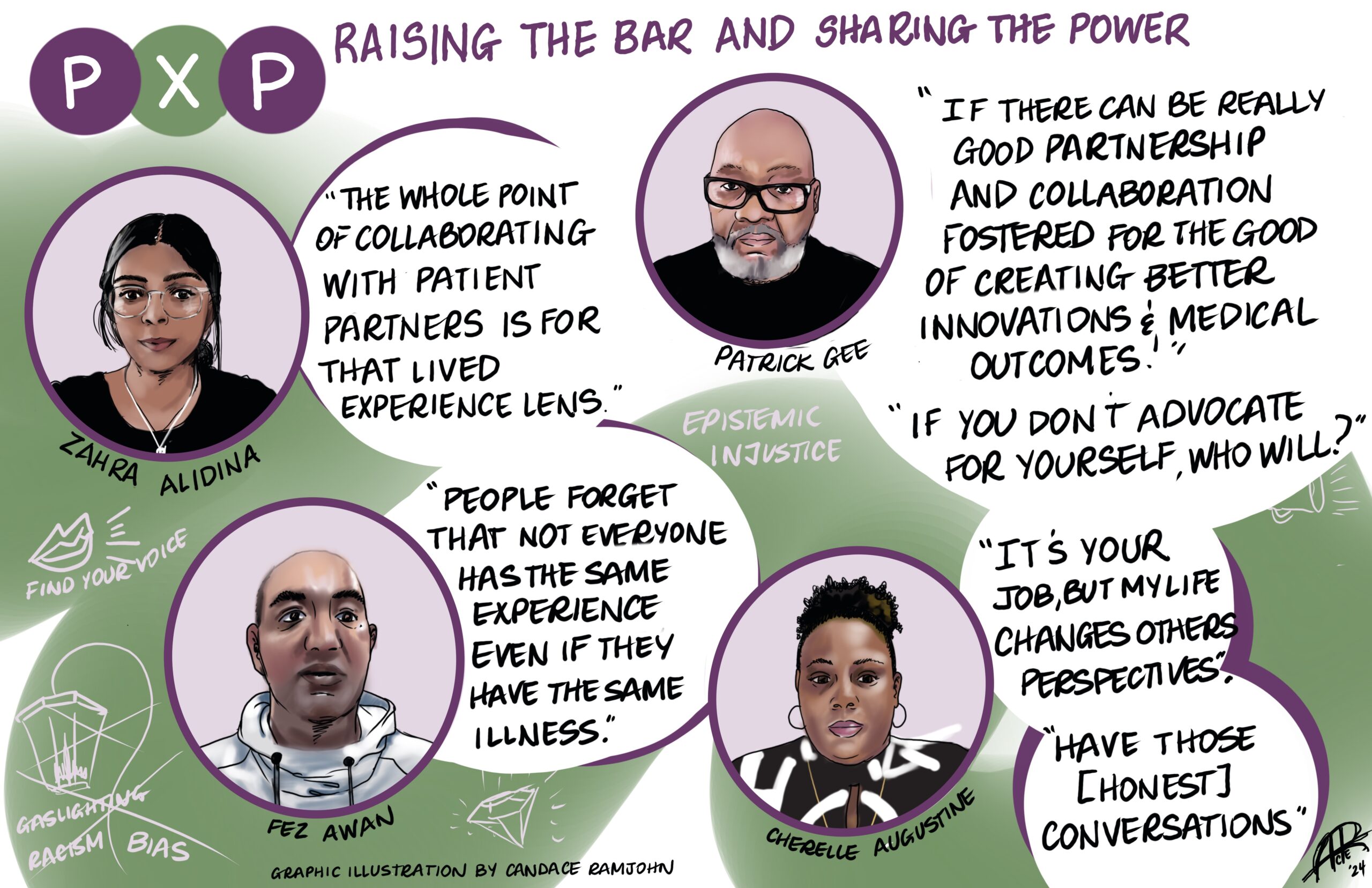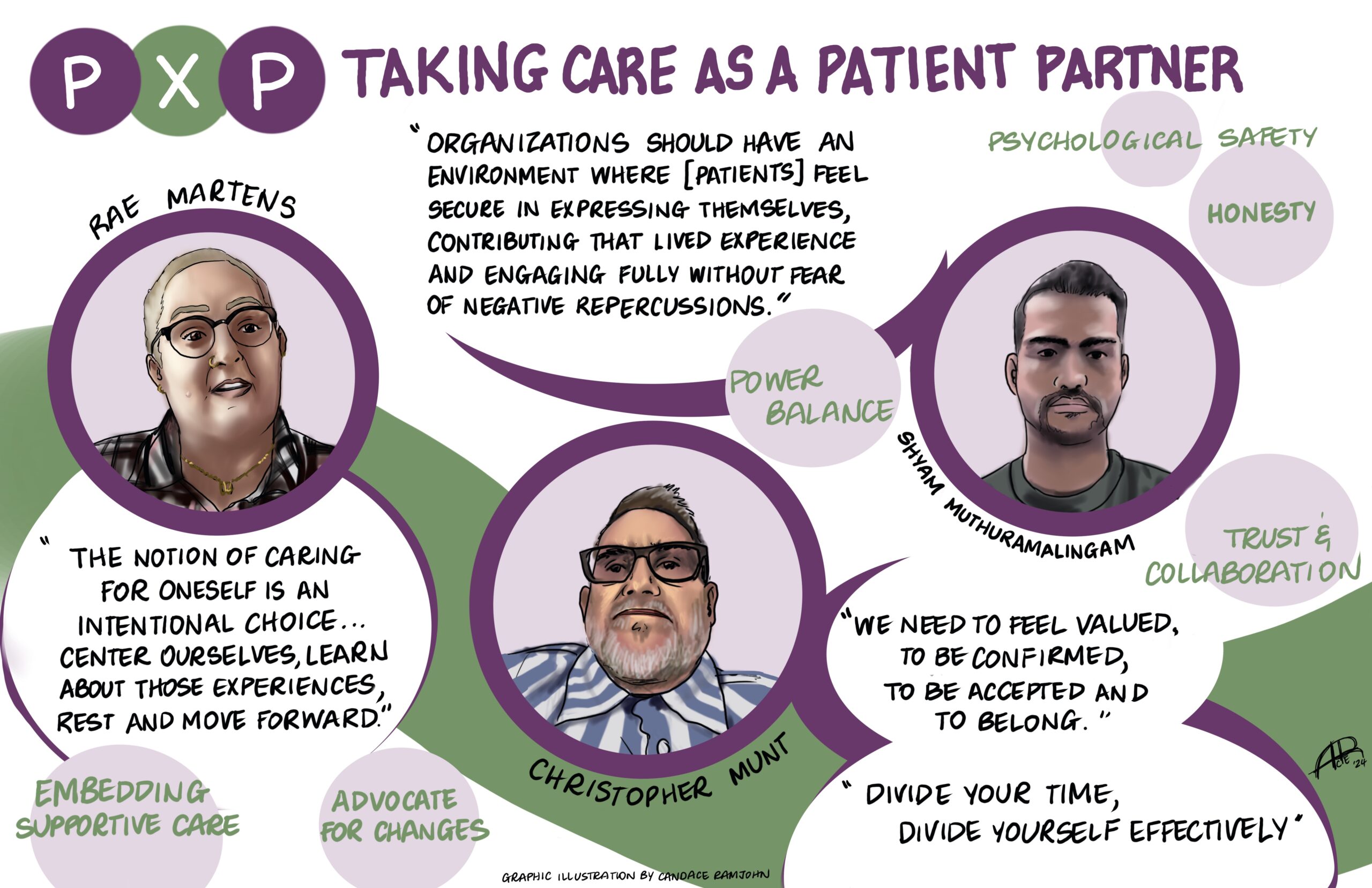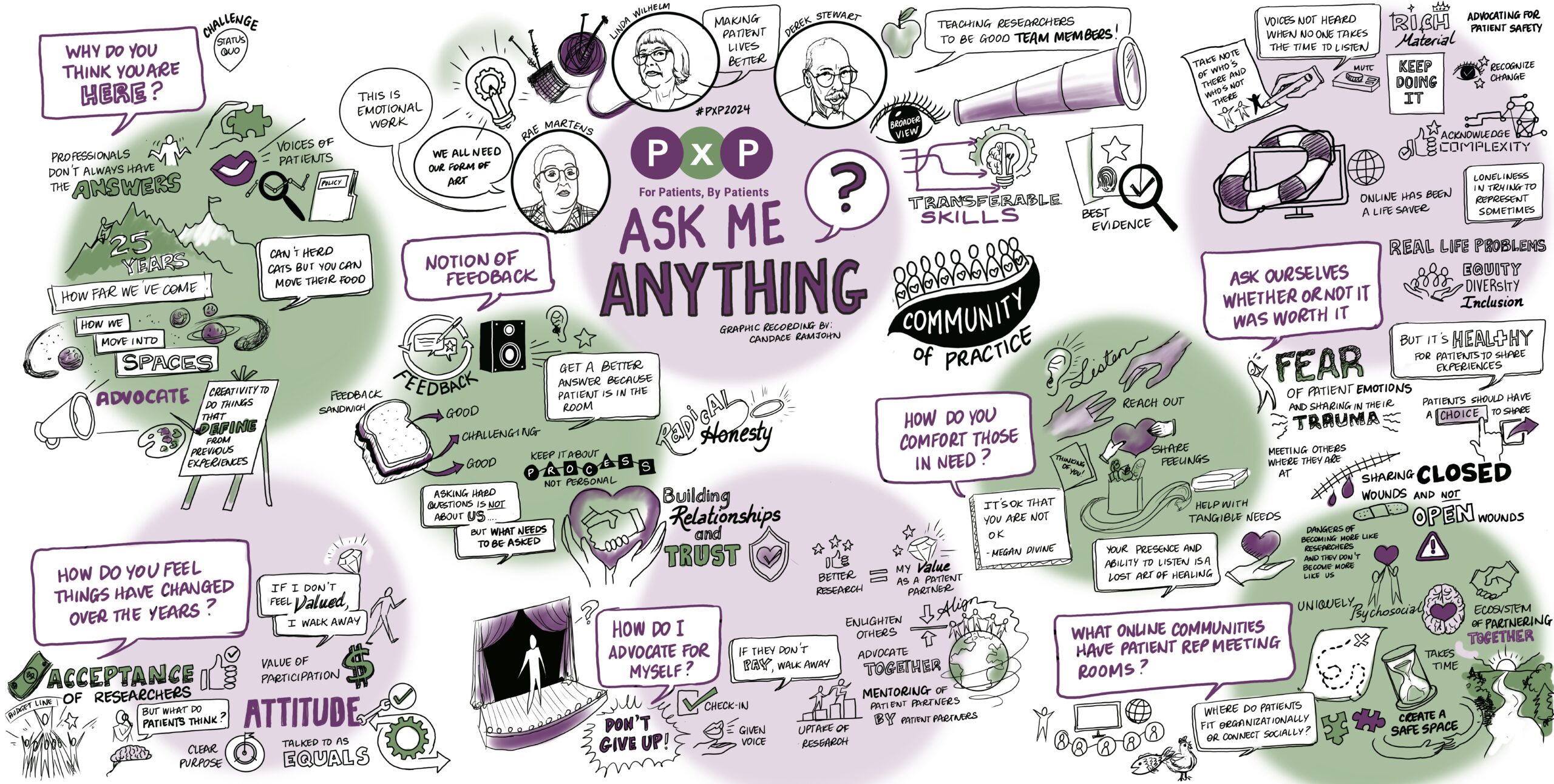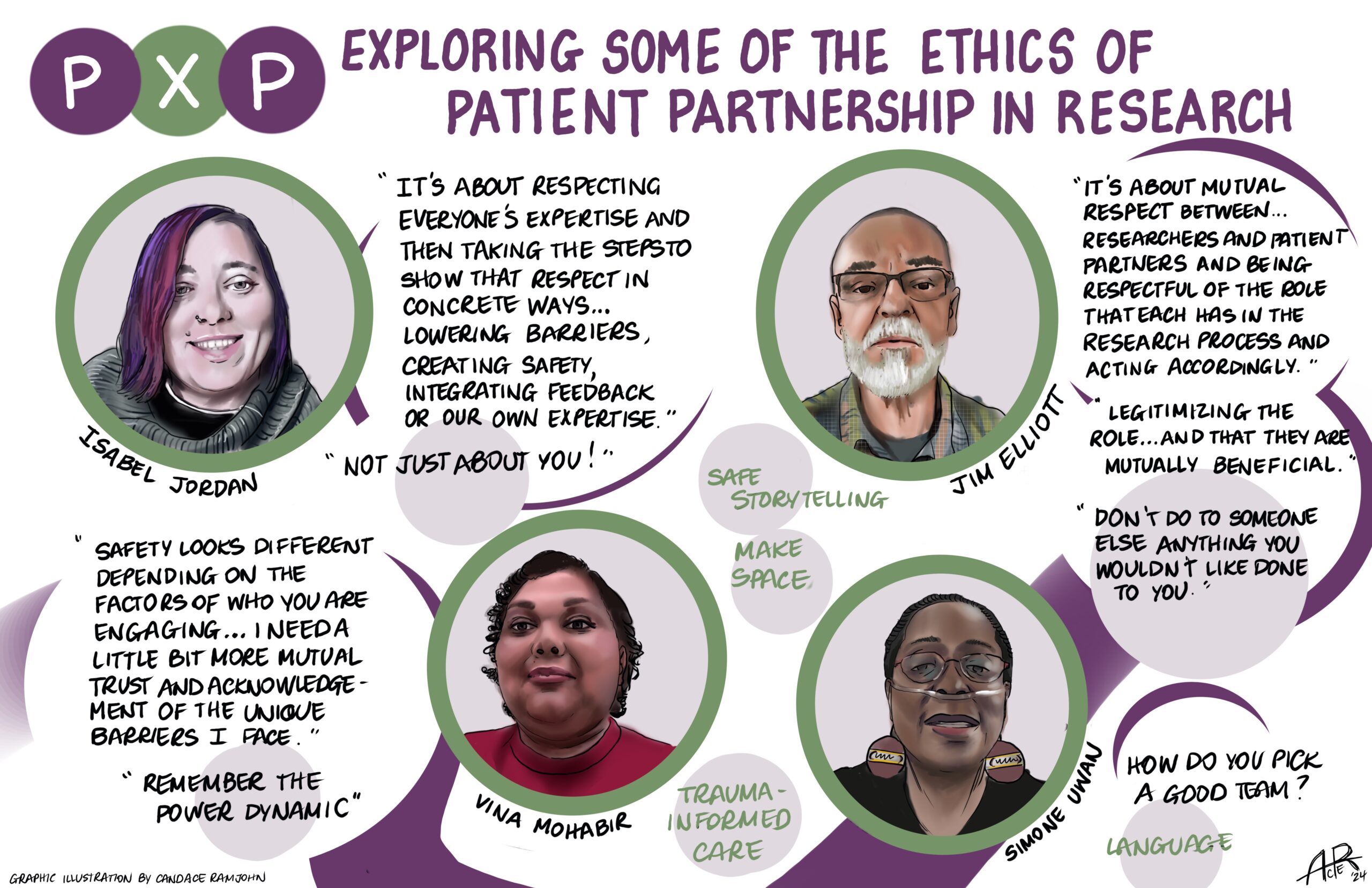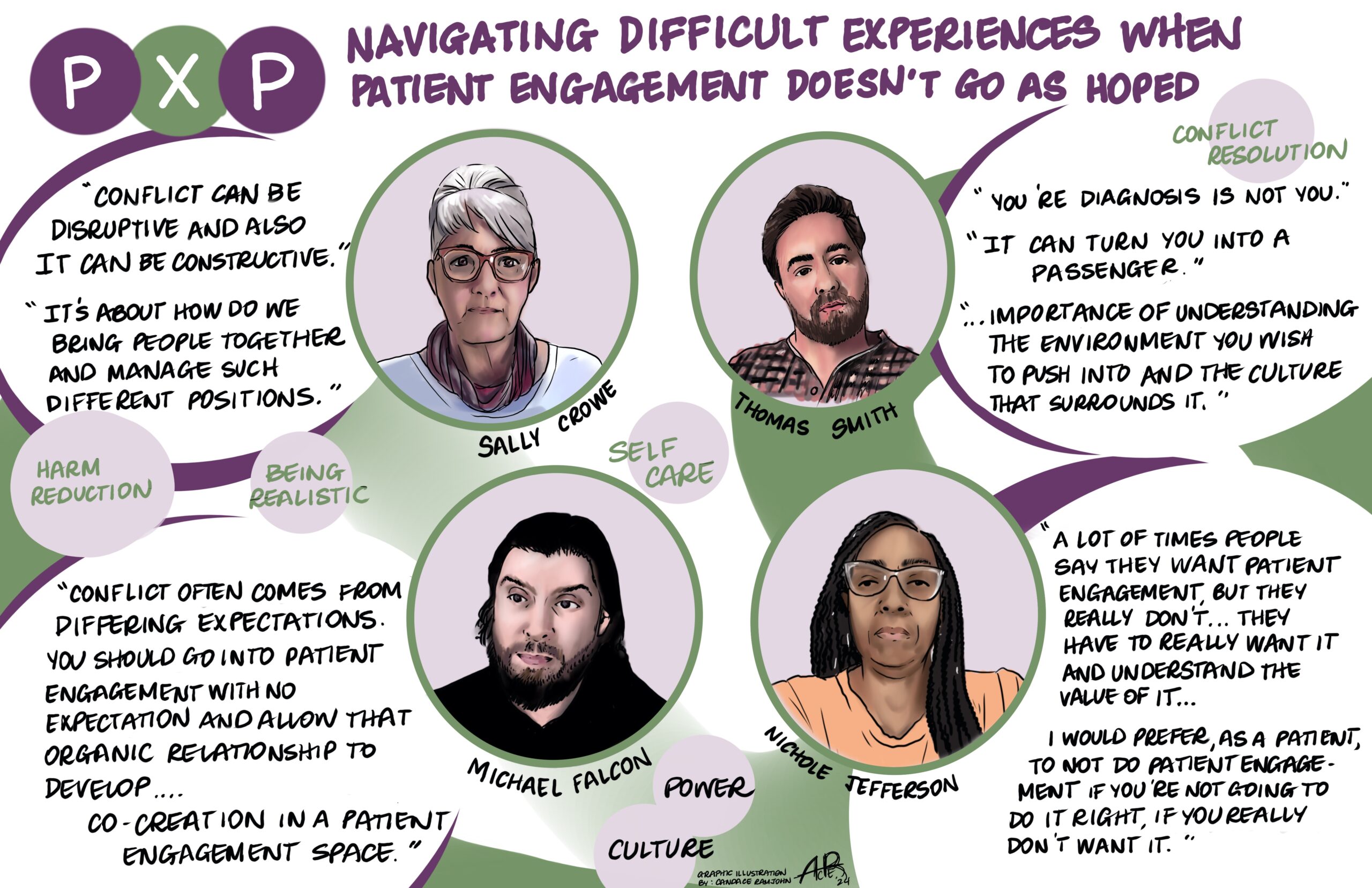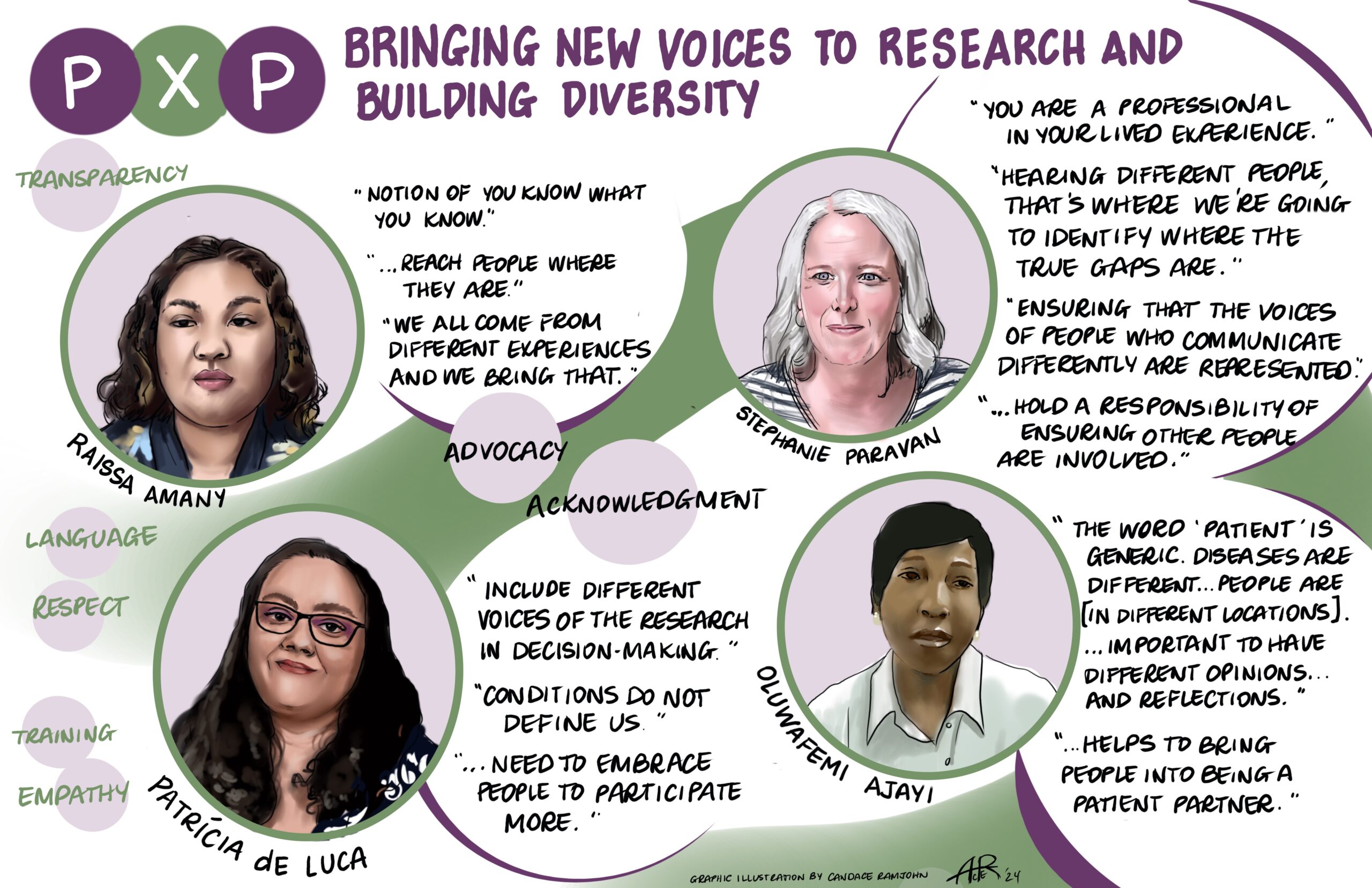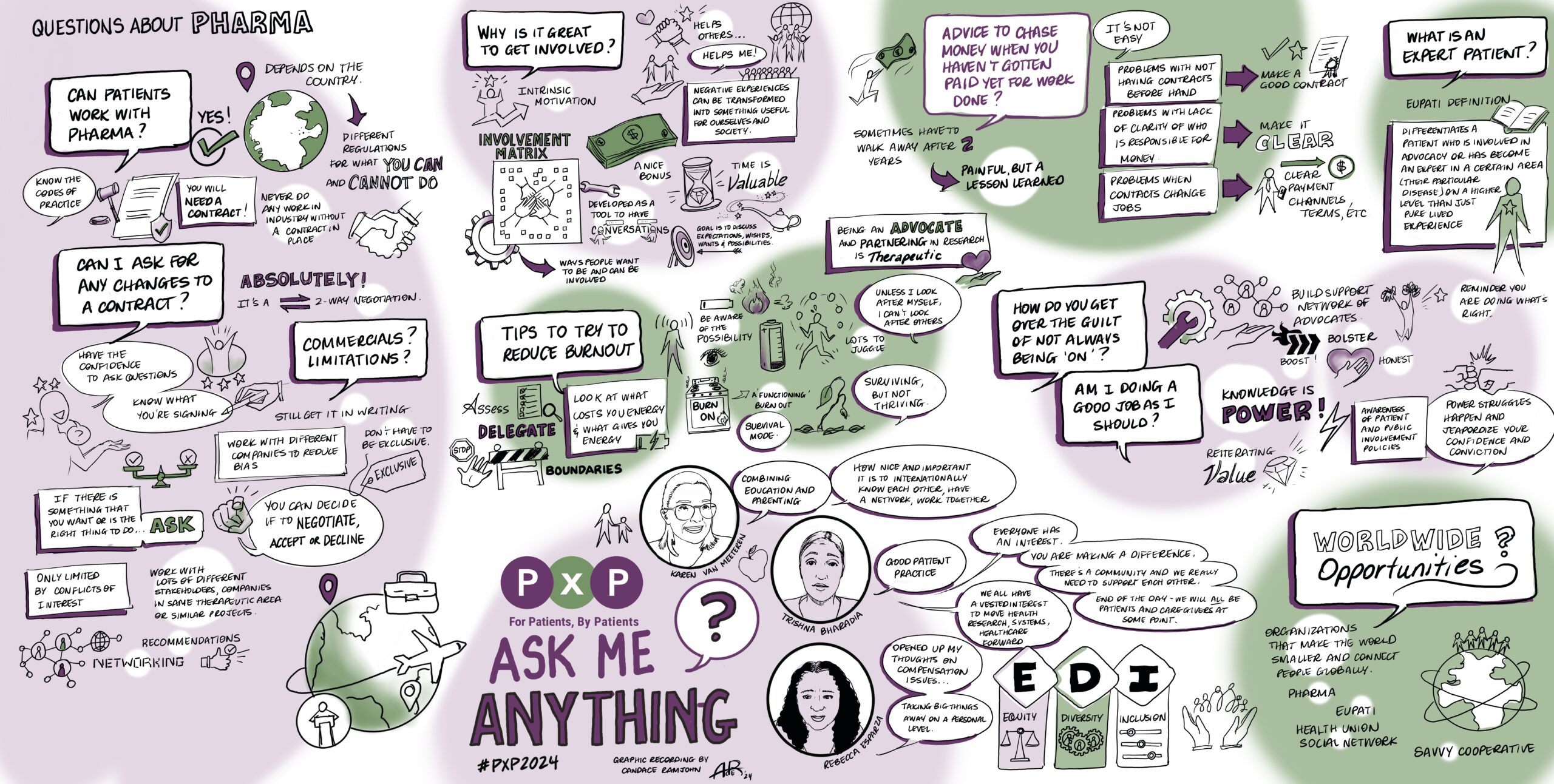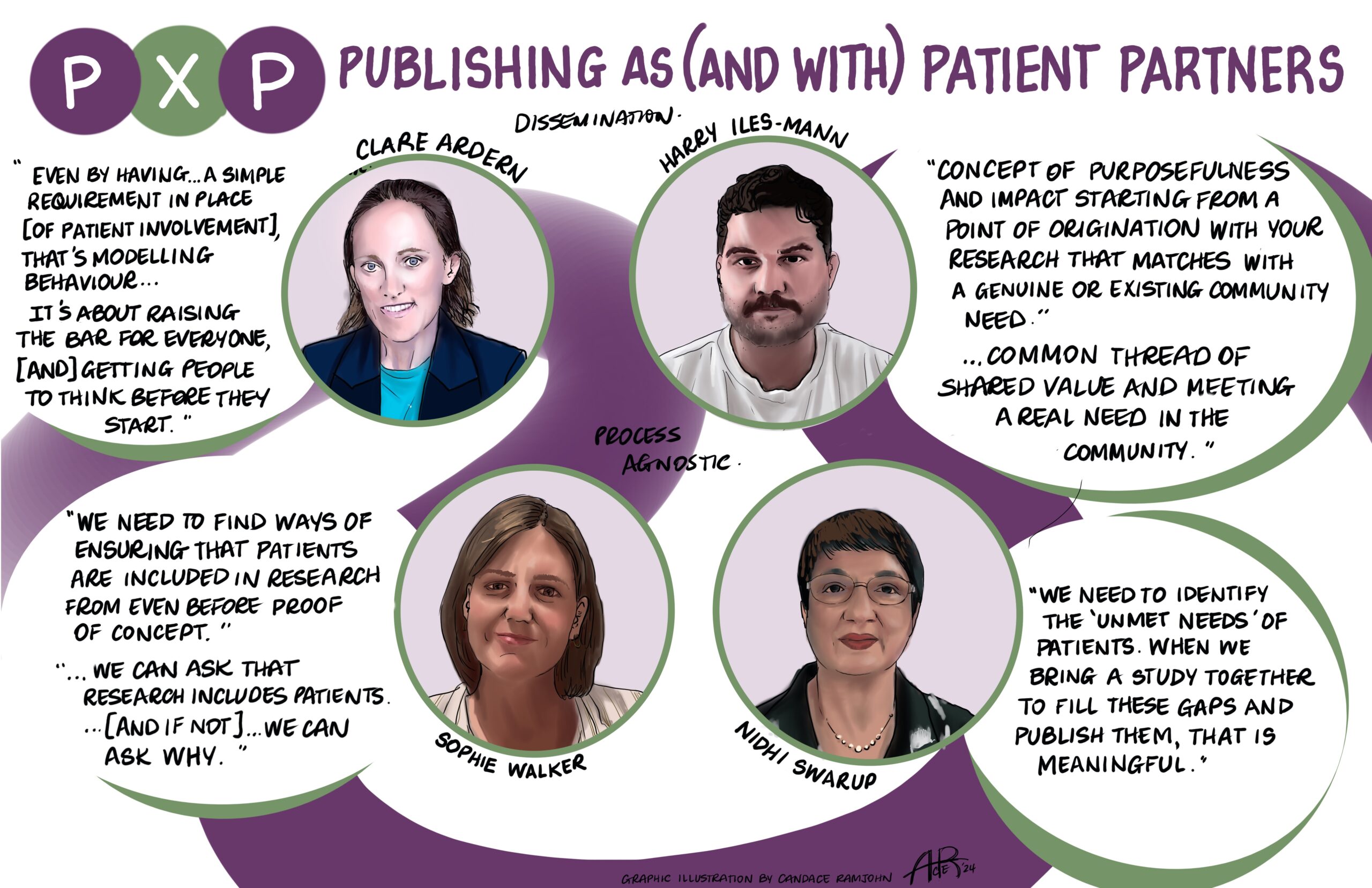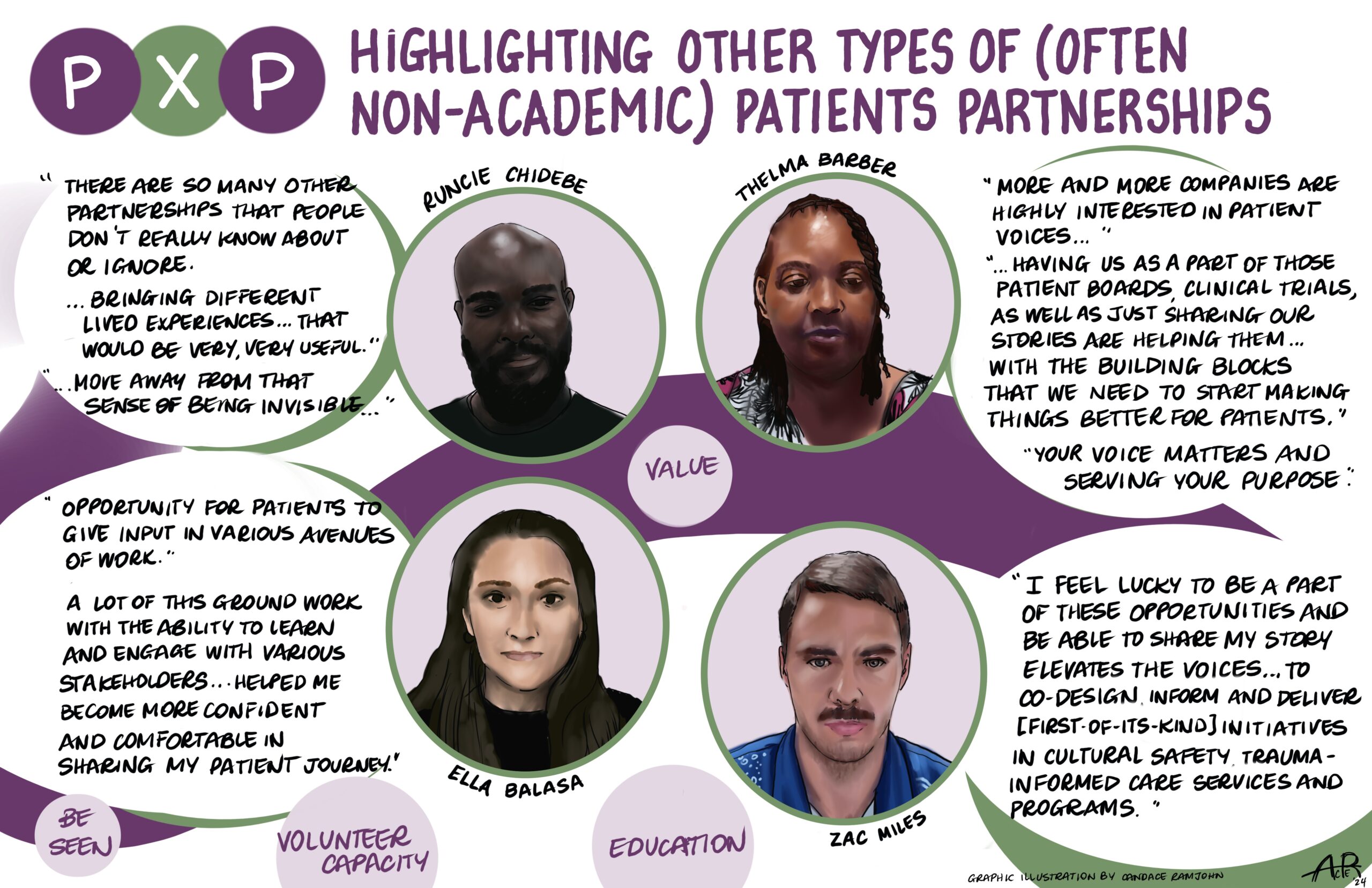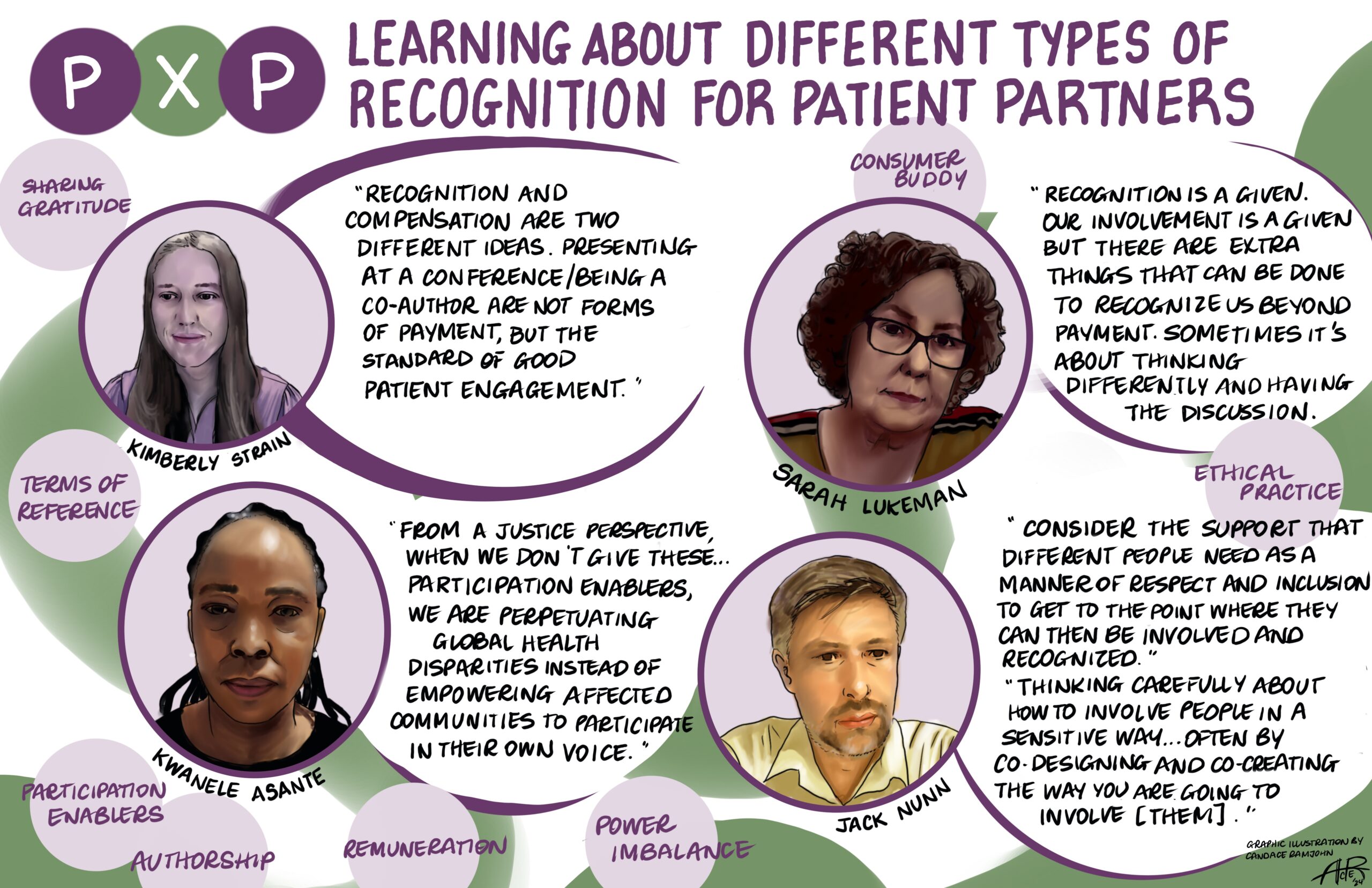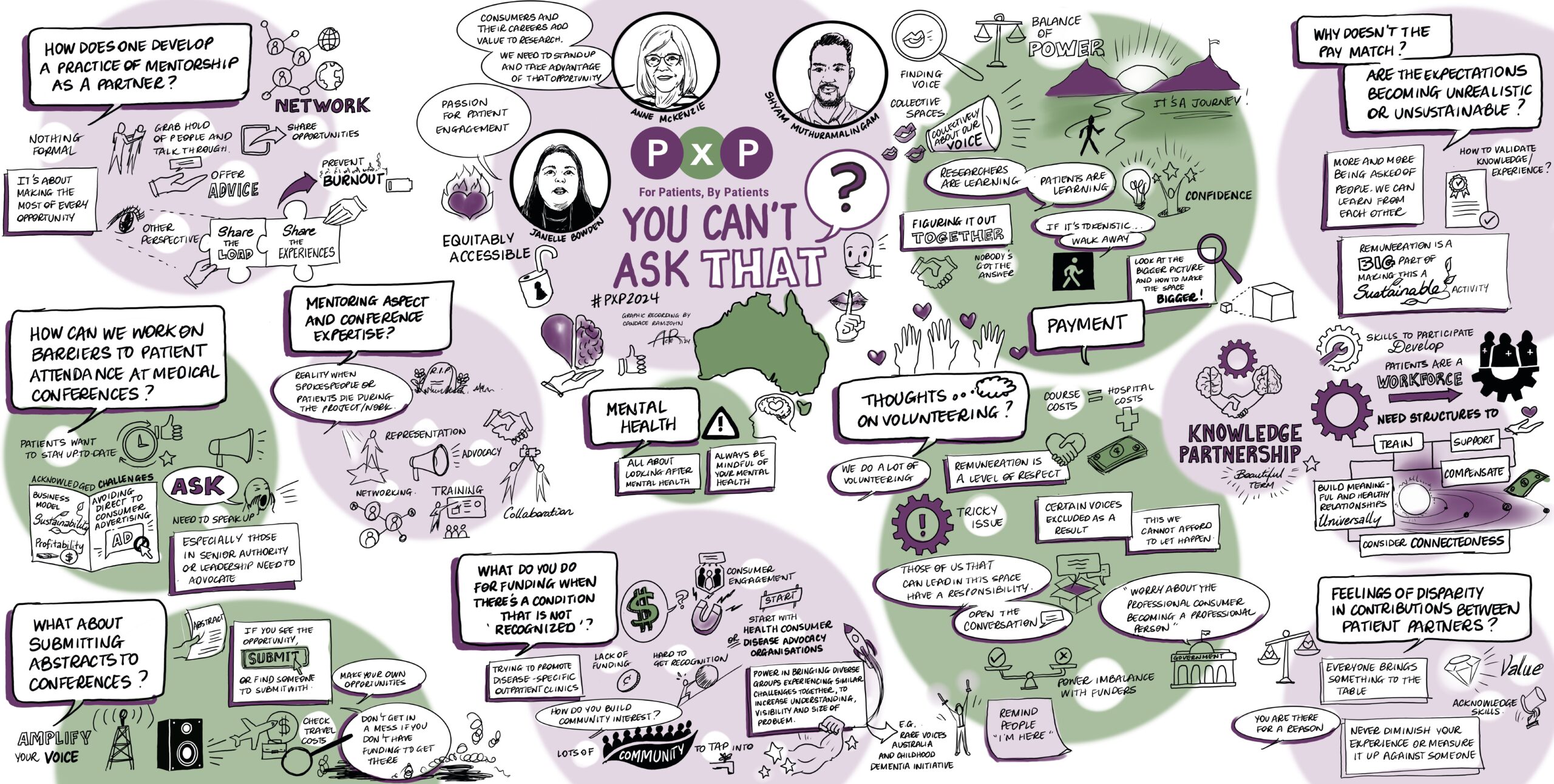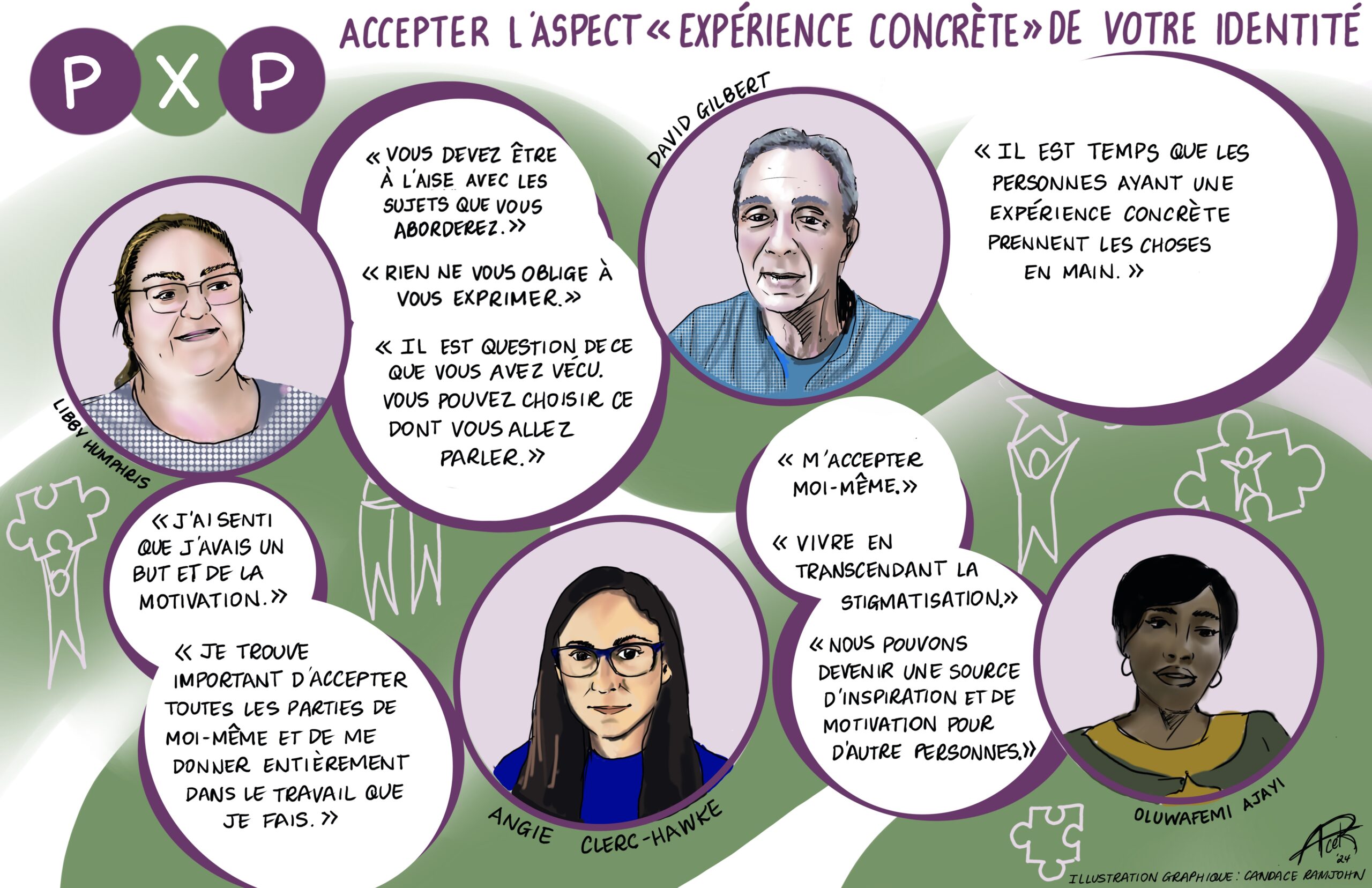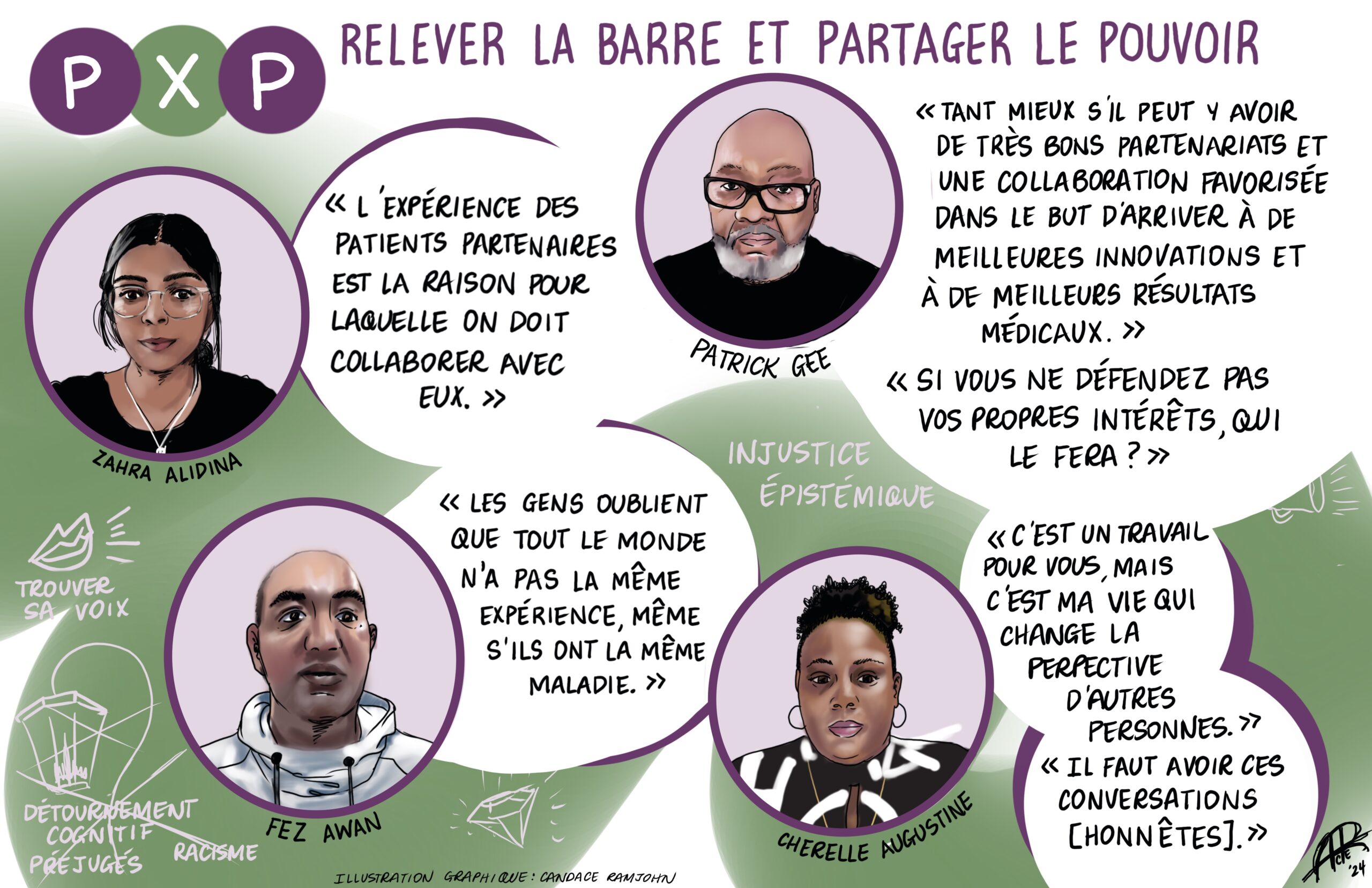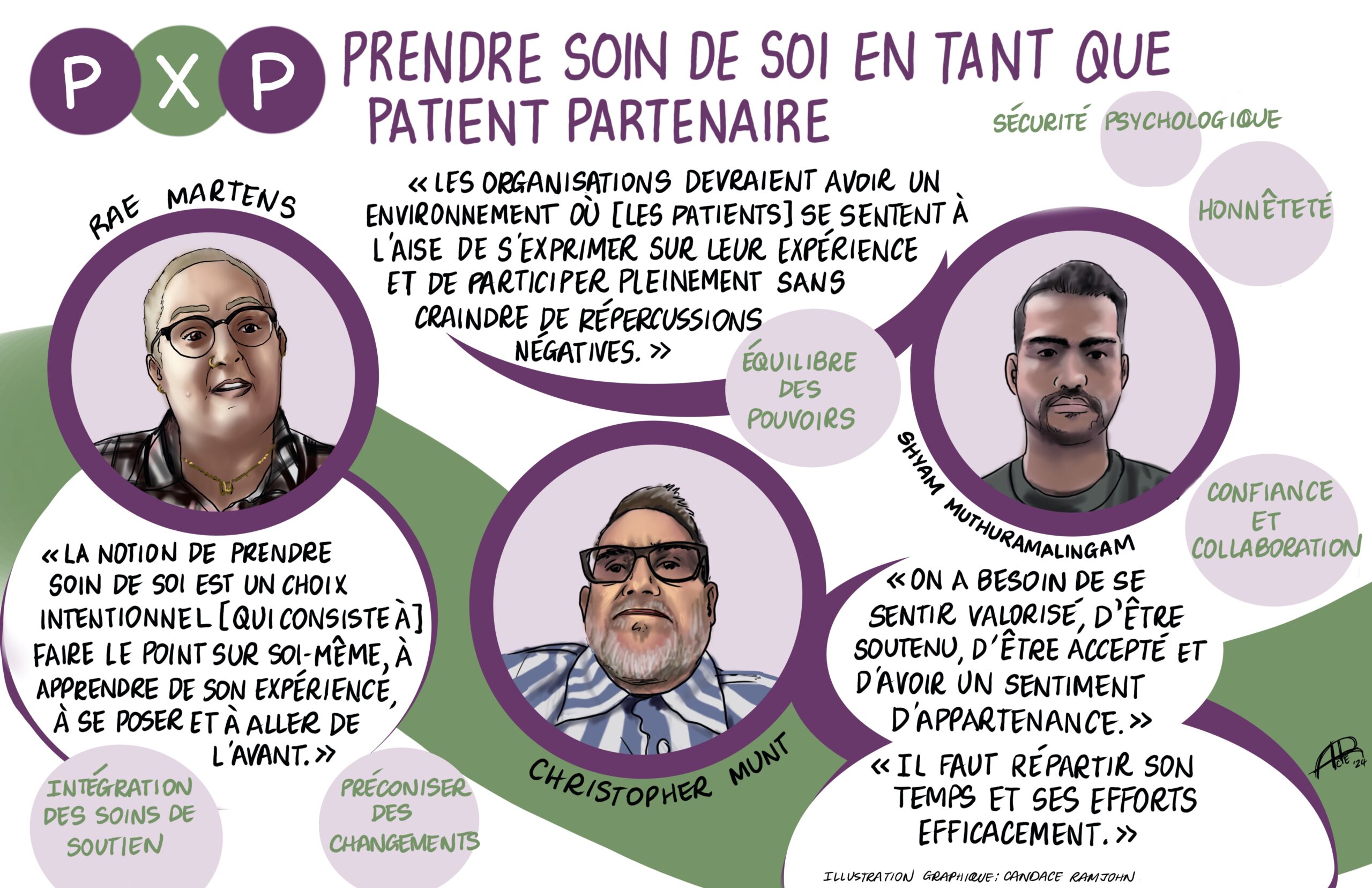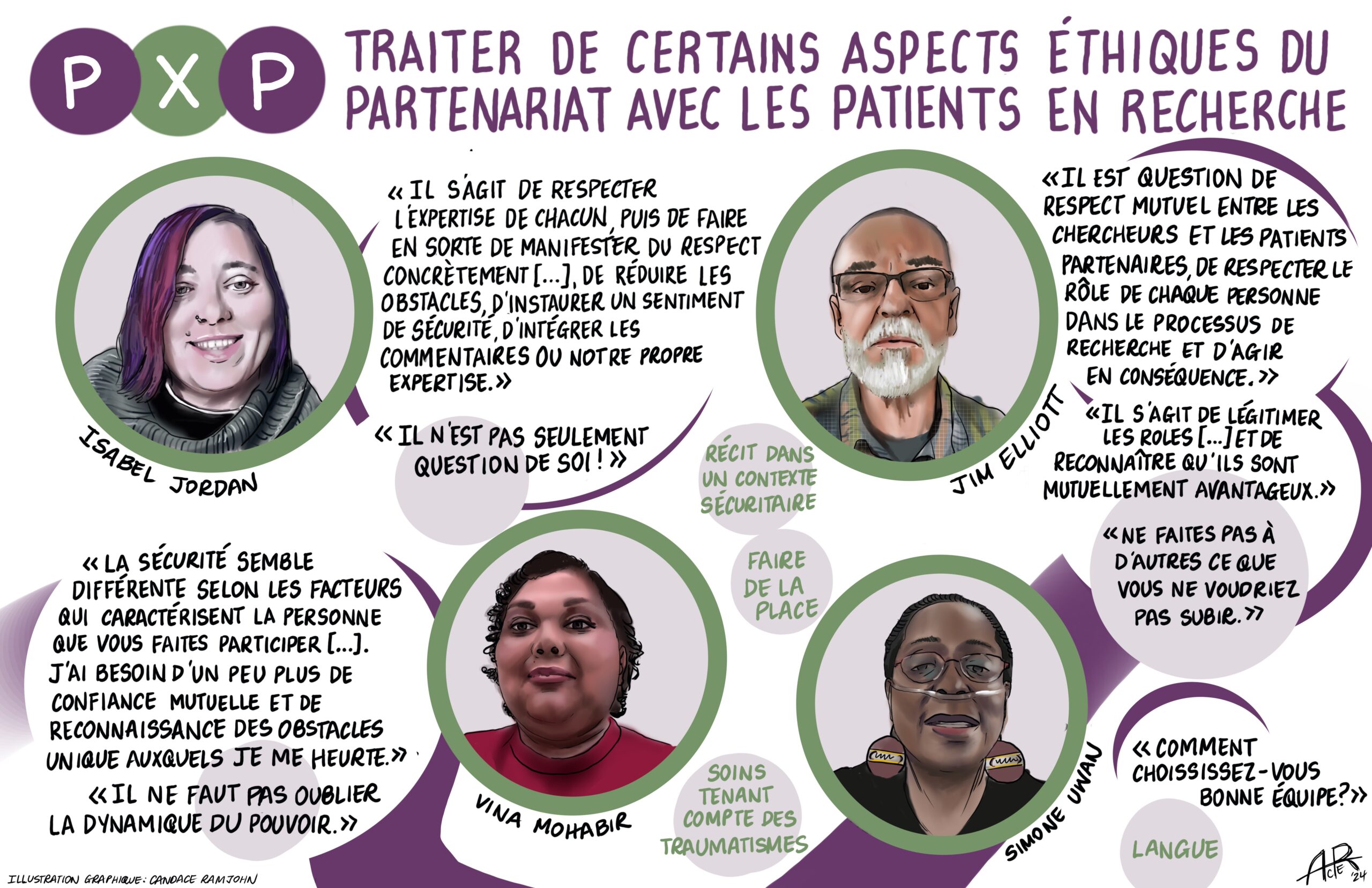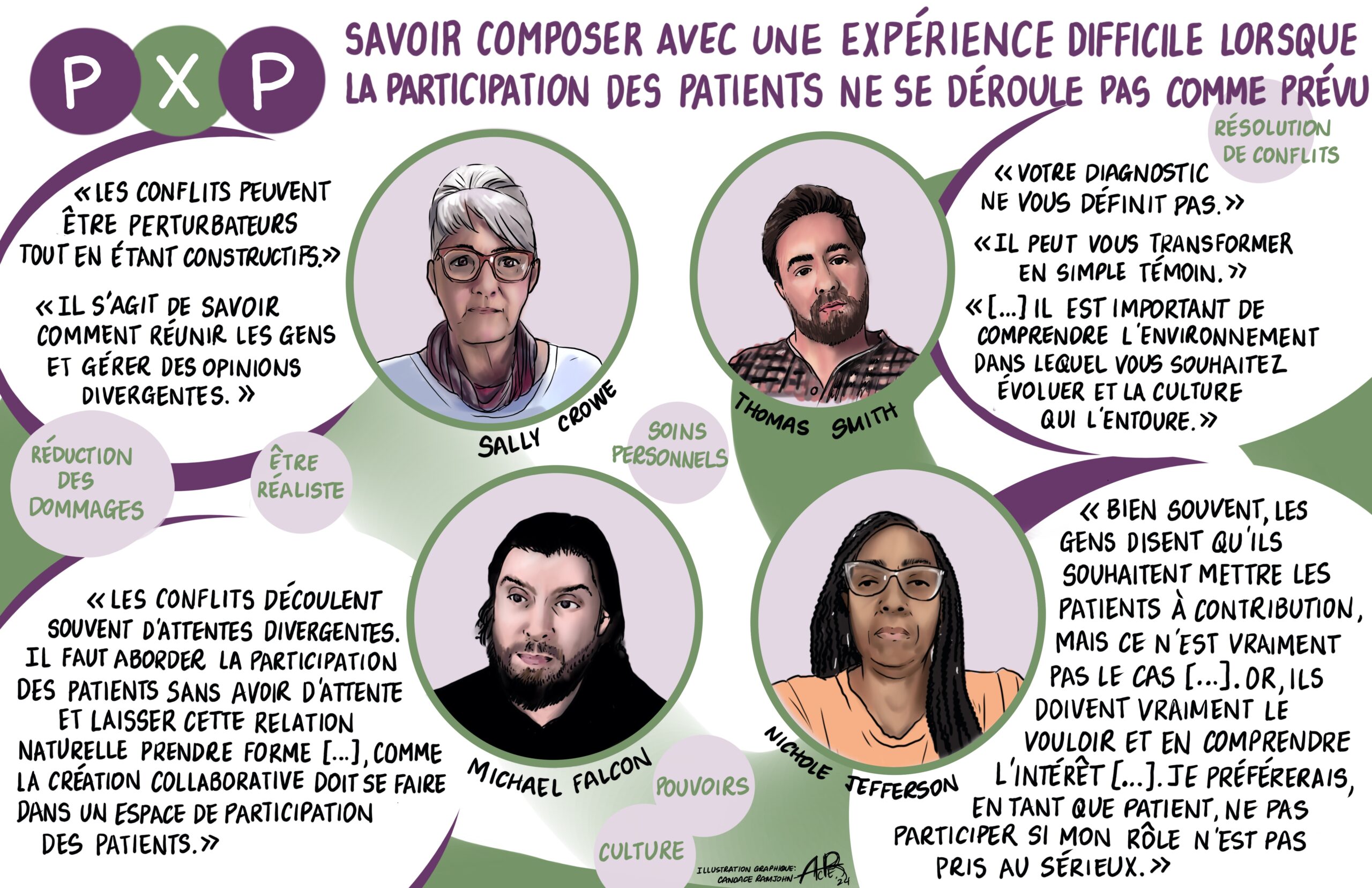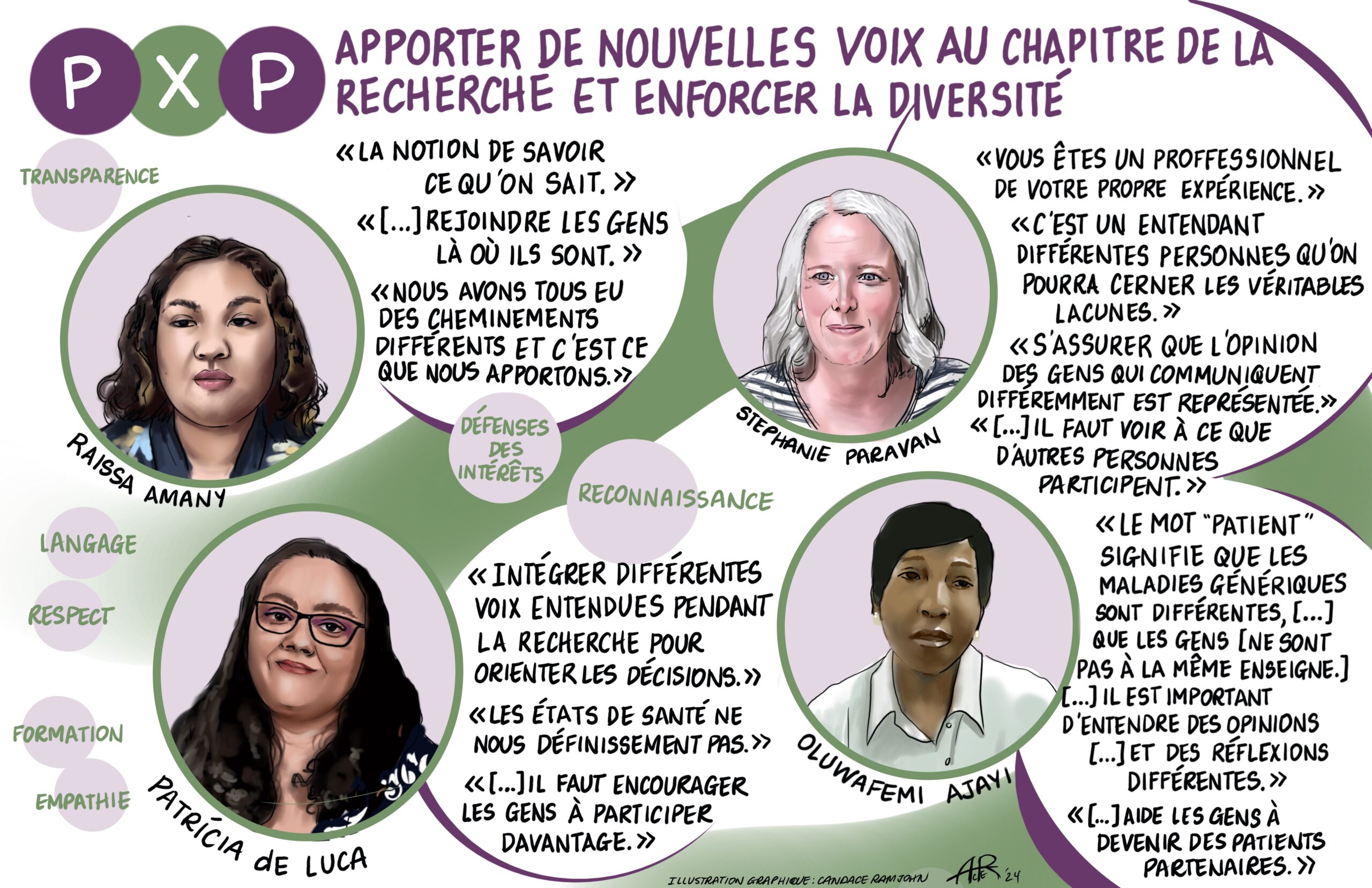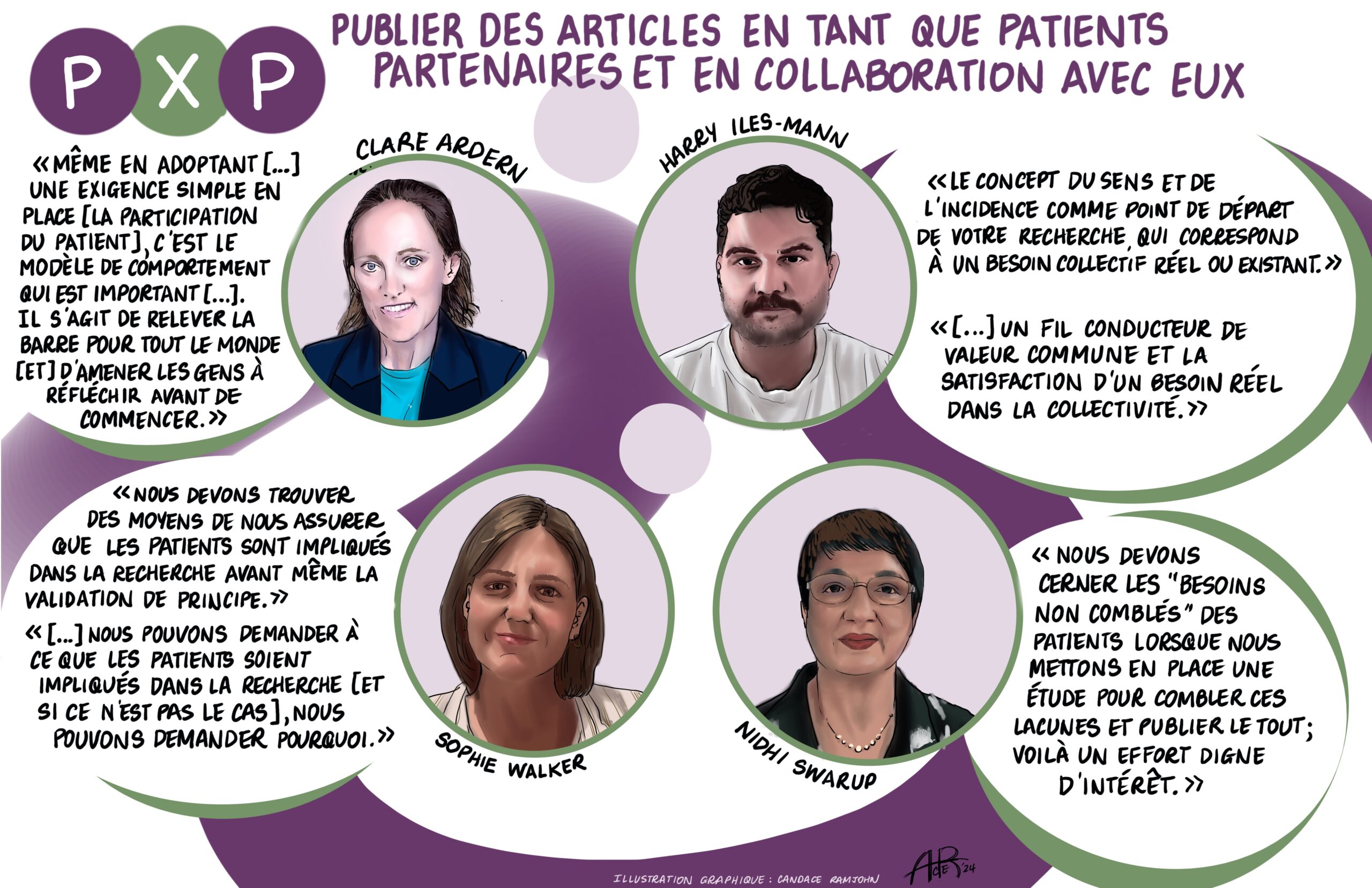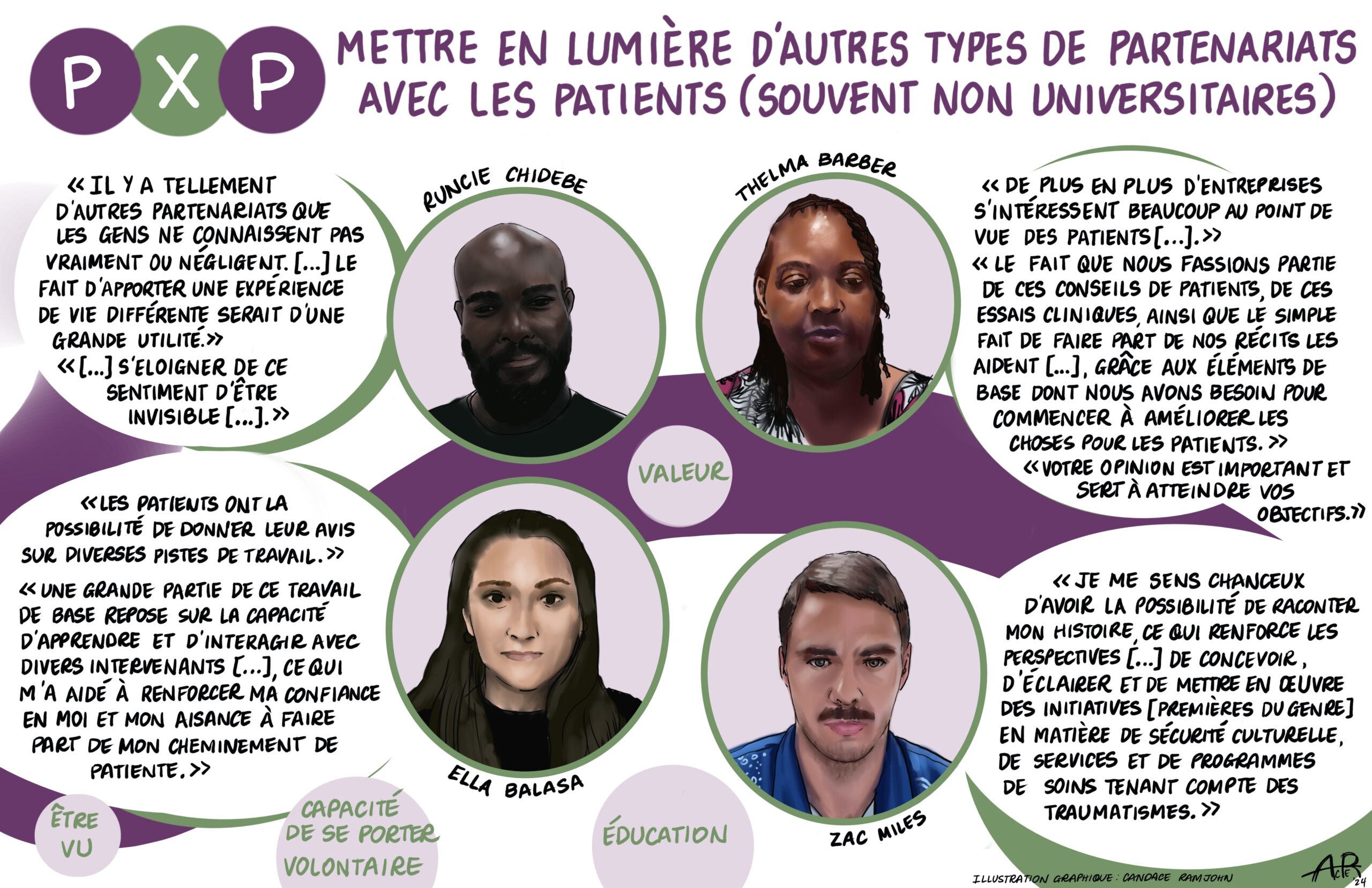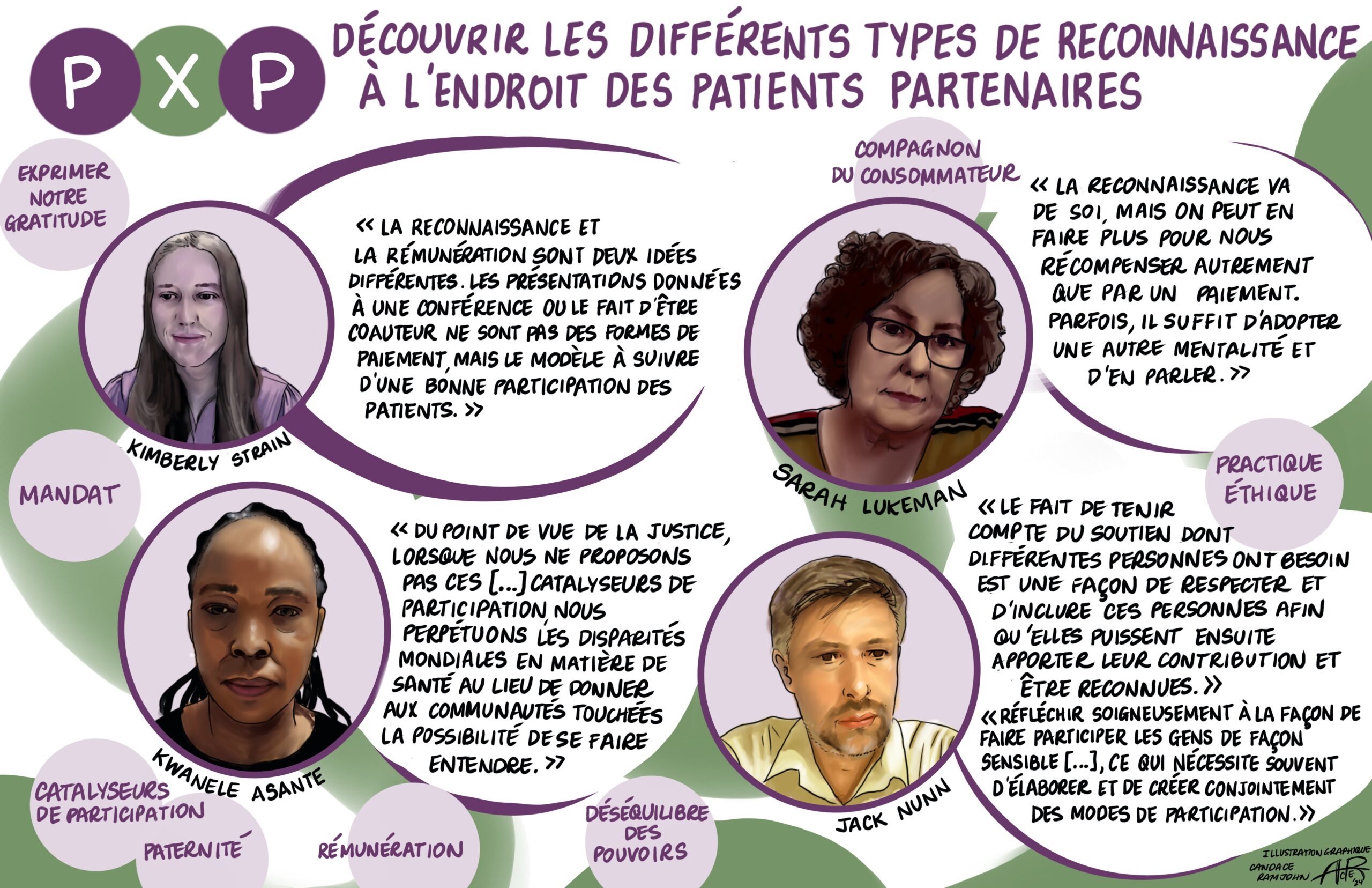Interview with Candace Ramjohn, By Melody Choi
Candace Ramjohn, a self-identified "visual alchemist," sees visual media not just as a tool for representation, but as a language, a bridge, and a means of transformation. With a background in design thinking, systems thinking, communications, and traditional arts, she brings diverse perspectives to her work. As a Knowledge Mobilization (KM) specialist with the Alberta SPOR Support Unit, Candace’s approach is deeply shaped by her personal experiences navigating complex health landscapes—both as a patient and a family member. Below, she shares insights into the creative process behind the graphic recordings she created for the 2024 PXP (For Patients, By Patients) conference, and explores how visual media can transform patient engagement in research.
Why is visual media important to patient engagement?
Positioned at the intersection of art and science, visual media is central to how I engage with the world. I see my creative talents as an authentic part of my identity, something that allows me to make a meaningful difference through a niche that feels deeply personal. As a strong advocate for qualitative, human-centered approaches in health research, I believe that while the academic tradition of scientific rigor and quantitative methods is valuable, it can sometimes overshadow the rich, human stories at the heart of a patient’s journey. Visual storytelling is a way to bridge that gap. I believe that “people-centered approaches are essential for culture shifts,” emphasizing that visual media is an approachable and engaging way to understand patient experiences—one that resonates with people from all walks of life.
Can you walk through some of the creative choices you made when conceptualizing this project?
When conceptualizing my work, I faced the challenge of capturing the vast diversity of patient experiences while maintaining authenticity. One of the biggest challenges I encountered was ensuring that the final product stood out, while still being respectful and true to the subject matter. I asked myself, "Which artistic medium will speak to people most effectively? How can I truly honor the essence of each patient's story?" These guiding questions shaped the artistic direction I developed.
As an artist, I generally gravitate toward tactile, organic artforms that engage the senses, but I understood that digital tools were necessary for accessibility. However, one of the beauties of being a self-proclaimed “visual alchemist” is finding my artistic stride within the circumstances and scope of each new project. I ultimately decided to lean into graphic illustrations and airbrushed-style artwork, consciously avoiding overly abstract or surreal representations. By striking a balance between realistic representation and artistry that mimicked graphic-novels, my goal was to depict each individual as the hero of their own story.
Did you find any quote or session to be particularly impactful? Why did it resonate with you artistically or with your lived experience?
I found all of the sessions eye-opening, noticing that each participant’s experience was unique, and the bravery in sharing those stories left a deep impact on me. However, one quote that particularly resonated with me came from David Gilbert: “We’re all experiential practitioners.” This idea—that we are not defined solely by our conditions, but also by the professional knowledge we gain through lived experience—reinforced my intention to depict patients as full individuals, not just their diagnoses.
Reflecting on my own experiences as a patient and caregiver, I recognized how these personal encounters have shaped my artistic approach. They’ve allowed me to empathize deeply with others and have driven me to pursue patient-centered opportunities. My lived experiences have also empowered me to use my art to give others a voice.
What did you find most challenging about capturing the presenters’ knowledge and experiences visually?
The biggest challenge I faced in this project was doing justice to the diverse array of patient stories I encountered. I was mindful of cultural sensitivities, equity, diversity, and accessibility, knowing that my artwork had to reflect these values. For instance, I ensured that the images and text were a significant size and was intentional about creating sufficient colour contrast and opacity for distinction throughout each piece. Furthermore, all conference speakers received drafts of images and had the opportunity to request modifications to their visual representation or words. This collaboration was essential to make sure that everyone felt seen, comfortable and accurately represented.

